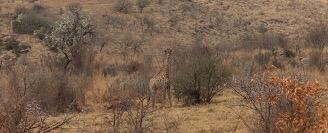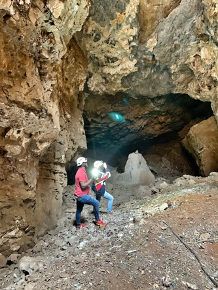
In the last decade we have learned that (at least) three human species existed across the African continent during the Pleistocene. After the paleoanthropological and archaeological discoveries and dating of Jebel Irhoud (Morocco), we know that Homo sapiens was present at around 300ka with a clear Middle Stone Age cultural package in the North of Africa. Moreover, since 2013 we know that Homo naledi, a new species with mosaic characteristics, was also present in Southern Africa at a time coinciding with late Early Stone Age and the beginning of the Middle Stone Age. Finally, in central and western Africa, there is evidence of Archaic sapiens species (for example at Kabwe [Broken Hill], Zambia). The nature of the cultural and biological interactions of these different hominins during the Pleistocene on the African continent is still unclear. Understanding the nature and periodization of the interactions of these hominins both biologically (ecologically and genetically) as well as culturally, are fundamental questions in Human Evolution.
In the last decades, the main focus of Middle Stone Age archaeology has been on the debate of the origin of complexity or modern human behaviour. Tacitly, the defenders of an early development of human complexity were assuming the identification of the Middle Stone Age with Homo sapiens.The general overview of the cultural behaviour during the Middle Stone Age in the African Continent suggests that it was a period of regionalization and the appearance of new complex forms of technology such as hafting and microlithism. For the South African archaeological record the Middle Stone Age is still depicted as a monotonous techno-typological phase with two punctuated technological traditions within that monotony (the technological traditions of the Howiesons Poort and the Still Bay). From this simplistic archaeological evolutionary trajectory, the main question that arises is: What is the reason for the contrast between a seemingly monotonous archaeological record during the Middle Stone Age on the one hand, and a rich hominin variability during the Pleistocene?
With this project we would like to contribute to this scenario adding archaeological, paleoenvironmental and paleoanthrological data from Southern Africa, notably from the Grassland and Savanna biomes. In this project we want to tackle this debate through the documentation of new archaeological data on these biomes through new methodologies and fieldwork; and considering the following disciplines: Archaeology, Paleoanthropology, PaleoGenetics, PaleoEcology, Chronology and GeoArcheology. All of these fields should be interconnected with a critical taphonomical perspective.
Mr. Tumelo Rufus Molefyane
Mr. Maropeng Mpete
Mr. Mathabela Tsikoane
Mr. Lambert Hendrik Swart van Rooyen (Dirk van Rooyen)
Mr. Fernando Colino Polo
Dr. Tebogo Makhubela
Dr. Keneiloe Molopyane
Dr. Jerome Reynard
Prof. Lee Berger



